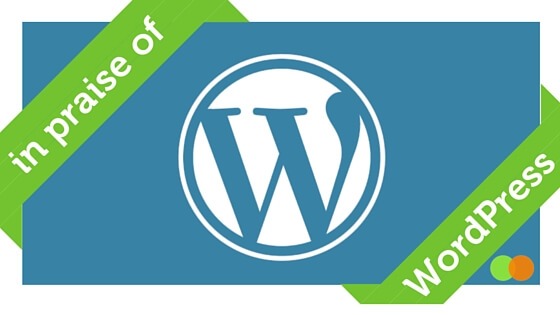
Just imagine that you want a Beautiful Website – maybe to sell your services, maybe to display your products or maybe just to tell the world a little bit more about yourself. A Website Designer makes you a Beautiful Website. You want as many people as possible to see your Beautiful Website.
But if you want to score highly with those all-powerful search engines and feature high enough up a search page that people do start visiting your site, you need to add content. Often. And you really mustn’t let any out-of-date information stay on your site – we all know what a turn-off it is to see “Next Concert on 14th March 2014” when it is already 26th October 2017 – doesn’t give you much confidence in the rest of the website.
In the olden days, content would be hard-coded into a website. And if you didn’t know your HTML from your CSS, making changes would invariably require a Website Expert.
Then WordPress came along.
It started as a blogging platform, and any blogging platform needs people with no technical computer knowledge to be able to publish information easily and frequently. So those clever people at WordPress magically put together some PHP (which is a scripting language) and MySQL (which is a database) and created a new Content Management System. This meant that, as long as you could log into your Beautiful Website, you could add content all by yourself. No more excuses for not publishing your weekly blog – and certainly no excuse for those announcements from 2007 on your Beautiful Website!
All our websites are built with WordPress CMS.
Even though I code my website myself and could therefore make any updates within the coded files, it is much more efficient to add updates via a CMS.
But it’s not just because WordPress has such a user-friendly CMS that we have chosen to use it – it is also because it is Open Source, which means it’s free for anyone to use, and is created and supported entirely by it’s volunteer community. Started in 2003 as a blogging platform, it has blossomed into the most popular Open Source Content Management System on the internet, and now powers nearly a quarter of the worldwide web.
It is important to distinguish here between WordPress.com and WordPress.org. as it can be confusing when you first come across the term. WordPress.com is the hosting side of WordPress. WordPress.com will host your WordPress site for you. If you don’t mind having a .wordpress.com domain name, you can start a website for free with one of the many basic templates, or pay for your own domain name, ad-free hosting, premium themes, and other add-on features. WordPress.org is the software that you download to build your site and host yourself. You have to be more comfortable with computer software to do this – it’s certainly not for the real beginner. But, again, it is worth stressing that this is free. Again, you can start using one of the available templates, for free.
Plug-ins are another major bonus with WordPress.
These add features to any website, from contact forms to tide-times. Many are free, although some don’t get regularly updated to be compatible with all the updates of WordPress, so you have to check this before adding any plug-in. You get the occasional glitch, but generally they work well, and are a fantastic resource for users and designers alike.
As a developer and designer, I can build unique themes that are as simple or as complex as a website needs to be, whilst taking full advantage of the CMS system and support network. So a client can update content themselves, whilst I have the freedom to design themes that suit my needs and, more importantly, my client’s needs.
Win win situation.
